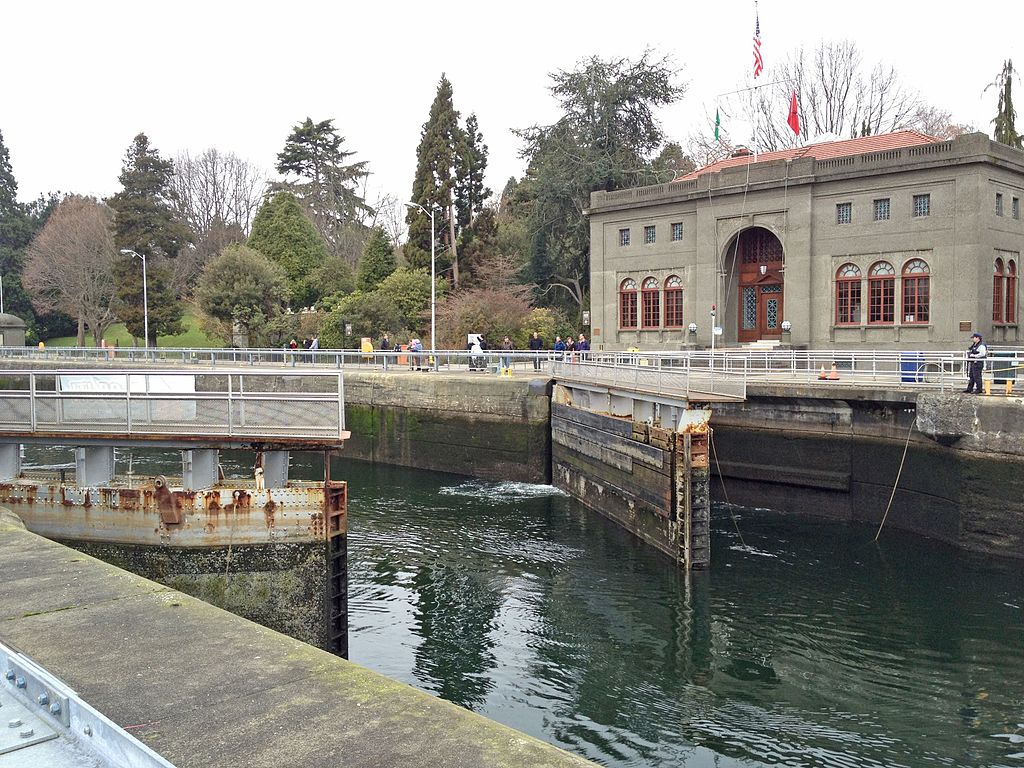The Chittenden Locks

By Alice Winship
Here comes a tug with a barge in tow
Watch what goes up and down to the docks
They come in high and they go out low
At the Chittenden Locks, the Chittenden Locks
Chorus: The locks were named for a big fish here
Hiram M. Chittenden, the army engineer
The Ballard Locks have a lawn so green
Bring a picnic lunch and you can watch the scene
The fish boats go for Alaska fish
Watch what goes up and down to the docks
Salmon and crab make a mighty fine dish
At the Chittenden Locks, the Chittenden Locks
Chorus
Here comes a megayacht full of mega muckamucks
Watch what goes up and down to the docks
The owner doesn’t care that she’s burning megabucks
At the Chittenden Locks, the Chittenden Locks
Chorus
The old Arthur Foss needs some work and care
Watch what goes up and down to the docks
Keep the dollars coming and you’ll see her there
At the Chittenden Locks, the Chittenden Locks
Chorus
The fish ladder carries the salmon run
Watch what goes up and down to the docks
If sea lions feasting will leave us some
At the Chittenden Locks, the Chittenden Locks
Chorus
Notes
The Chittenden Locks is intended as a children’s song.
Hiram M. Chittenden was the Seattle district engineer for the Army Corp of Engineers from 1906 to 1908, during planning for the Lake Washington Ship Canal Project. A West Point graduate, he was one of the first elected Port Commissioners at the Port of Seattle, and was a noted historian of the American West. He was in charge of many significant projects for the Army Corp of Engineers.
When the locks were opened in 1917, they were officially named the Hiram M. Chittenden Locks. Finding this a mouthful, most people call them the Ballard Locks, after the adjoining neighborhood that is traditionally the residence of many Scandinavians involved in the fishing industry.
The ship canal links Puget Sound to Lake Union and Lake Washington. The locks raise vessels from sea level to the higher level of the lakes. After passing through the locks, vessels have access to Fishermen’s Terminal, where many fishing vessels dock, and the shipyards and industry along the ship canal, as well as the many pleasure boat marinas on Lake Union and Lake Washington.
There are two locks, a large and small lock. Large vessels enter and leave the locks first, so working vessels usually go in first. The garden and lawn next to the locks are a popular place for boat watching.
The Virginia V and the Arthur Foss are two of the historic vessels moored at the Historic Ships Wharf in Seattle, on Lake Union. The Virginia V regularly passes through the locks for events on Elliot Bay or other cities on Puget Sound. When the Arthur Foss was touring in the late 1990s, I worked on board as a volunteer deckhand, and went through the locks on her many times. The Arthur Foss, owned by Northwest Seaport, needs some work before she can return to touring.
Credits
- Written by: Alice Winship
- Arranged by: Dan Roberts, Chris Glanister, Rob Kneisler
- Alice Winship: lead vocal
- Dan Roberts: harmony vocal
- Chris Glanister: harmony vocal
- Rob Kneisler: harmony vocal
